7.01.2019
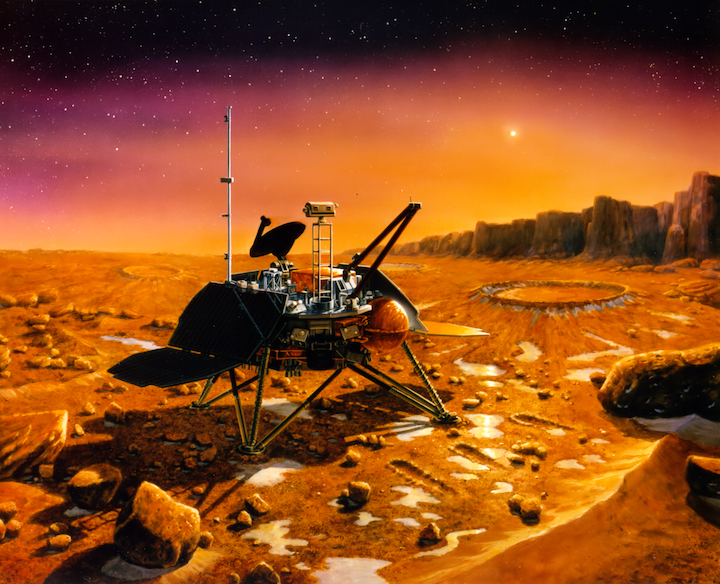
Mars Polar Lander was targeted for touchdown close to the south pole of the Red Planet for detailed inspection of its terrain, past and present climatic conditions and weather. Its failure severely jeopardized NASA’s plans of exploring the planet. Image Credit: NASA
Twenty years ago, this week, the familiar high-pitched scream of a Delta II echoed across the marshy Florida landscape. At 3:21 p.m. EST on 3 January 1999, NASA’s Mars Polar Lander roared into a blustery, cloud-covered sky from Space Launch Complex (SLC)-17B at Cape Canaveral Air Force Station, Fla. Its mission was to alight on Planum Australe—close to the Red Planet’s south pole—whereupon it would employ a robotic arm to dig into the layered terrain of Mars’ unexplored polar landscape and deploy a pair of microphones for soil-moisture experiments. A minute into the flight, the Delta II’s four strap-on boosters were discarded and the first, second and third stages performed perfectly, injecting the 640-pound (290 kg) spacecraft out of Earth’s gravitational “well” and onto an 334-day journey to Mars.
Eleven months later, that hope crumbled to nothing.
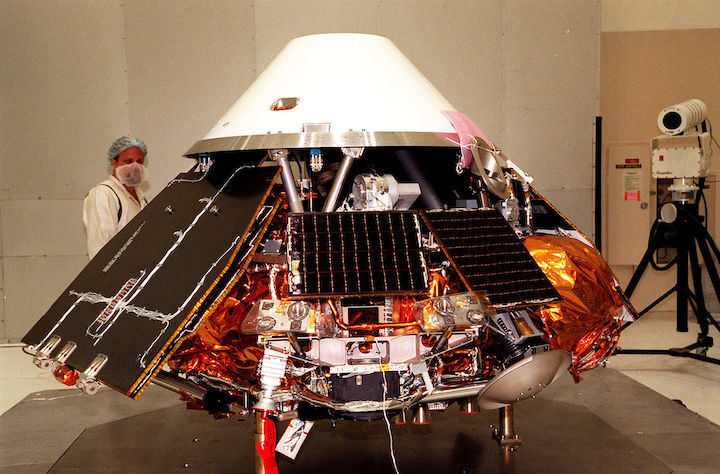
Mars Polar Lander is readied for launch. Photo Credit: NASA
It should have been the start of a spectacular mission to shine new light on the Red Planet’s polar geology and search for evidence of ancient climatic conditions and derive a clearer understanding of current and ongoing seasonal change at high latitudes, including the exchange of water vapor between the atmosphere and the surface. Mars Polar Lander would have sought near-surface ground-ice and conducted in-situ soil science investigations for physically- and chemically-bound carbon dioxide and water. The two Deep Space-2 probes would be deployed at high velocity from the lander, to hit the surface and take measurements at a depth of up to 3.3 feet (1 meter). It was hoped that the mission could address strong suspicions that a large quantity of water-ice existed beneath Mars’ south pole.
In keeping with its reputation, the venerable Delta II performed perfectly in delivering Mars Polar Lander towards its destination. “The launch was incredible, just amazing, because the vehicle is just sitting there one minute, and then it’s gone,” said Deep Space-2 chief mission engineer Kari Lewis, describing the Delta II’s characteristically rapid departure from SLC-17B. “There was a low cloud cover, though, so we didn’t see it for very long.” And despite early problems with the spacecraft’s star-tracking camera—a glitch later attributed to excessive stray light reflecting off its backshell and other metallic surfaces—the cruise got off to a fine start. Mars Polar Lander followed a so-called “Type 2” trajectory, traversing 180 degrees around the Sun to aim for a landing-point initially targeted at 73-76 degrees south latitude on Mars.
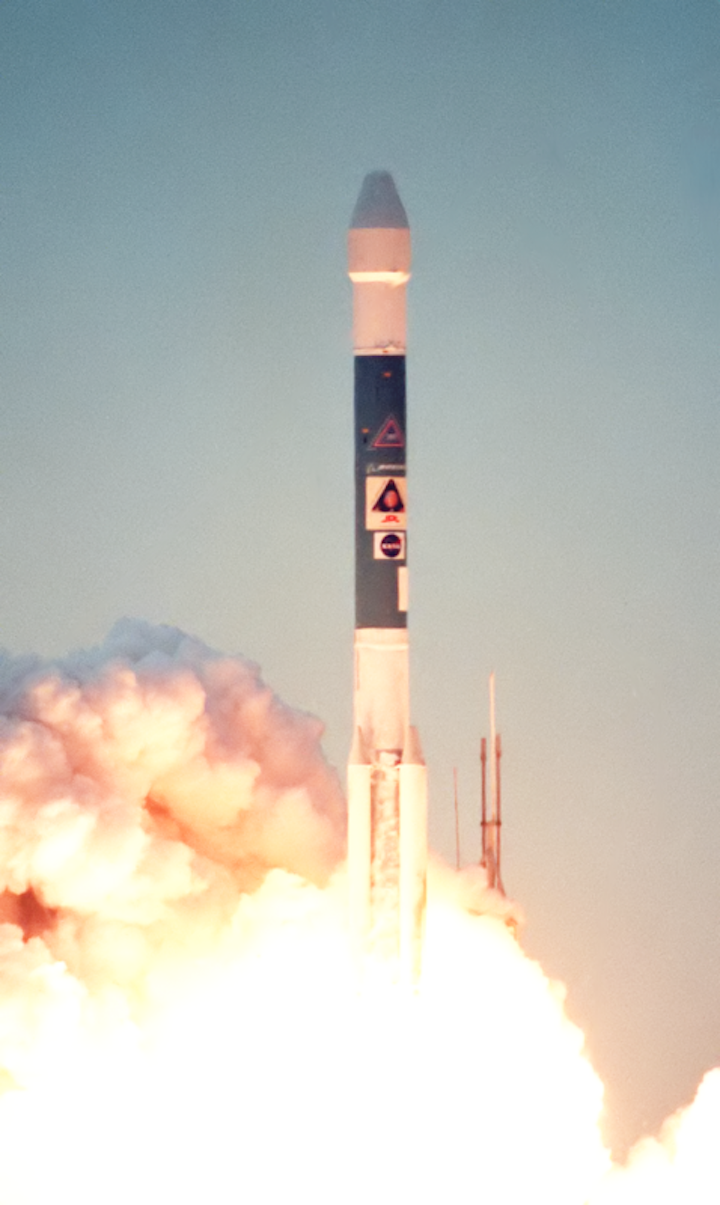
Mars Polar Lander launches atop a Delta II booster from Cape Canaveral Air Force Station, Fla., on 3 January 1999. Photo Credit: NASA
Two trajectory-correction maneuvers were executed without incident in January and March, with a third scheduled for mid-October. However, this “burn” of Mars Polar Lander’s 22-newton thruster was postponed until the end of that month, to permit engineers time to evaluate their procedures, following the September 1999 loss of NASA’s Mars Climate Orbiter, during orbital insertion. The third trajectory-correction maneuver duly took place on 30 October, by which time the landing site had been refined to 76 degrees south latitude and 195 degrees west longitude. Overall, the cruise had gone well, with the exception of Mars Polar Lander entering safe mode in early October, due to an errant indication between its attitude-control software and operating commands. Then, in early November, the Mars Climate Orbiter investigation team found that cold temperatures could affect the performance of Mars Polar Lander’s descent engine. This allowed for the development of new procedures to warm-up the engine, ahead of ignition.
In the meantime, other spacecraft systems were being readied for landing on Mars. At the start of November, the landing radar performed a successful self-test, and on the last day of the month a fourth trajectory-correction maneuver verified that Mars Polar Lander and was on-track for entry into the planet’s atmosphere on 3 December. A final trajectory-correction maneuver (the mission’s fifth) took place about 6.5 hours before arrival. Some five minutes before entry interface, the Deep Space-2 probes—appropriately named “Amundsen” and “Scott”, after Earth’s own pioneering south-polar explorers—would be jettisoned from the spacecraft. Protected by their basketball-sized aeroshells, the grapefruit-sized probes were targeted to hit the ground at 400 mph (640 km/h).
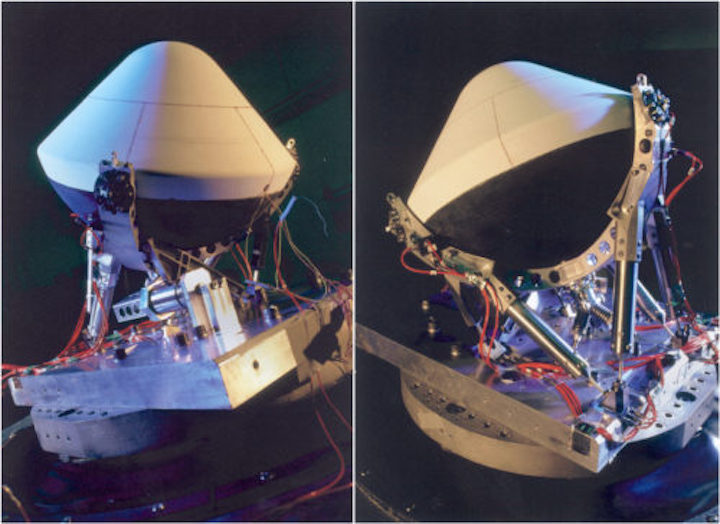
The Deep Space-2 probes, nicknamed Amundsen and Scott, would have penetrated the Martian surface by about 3.3 feet (1 meter). Photo Credit: NASA
Heading inbound at 15,400 mph (24,780 km/h), it was expected that Mars Polar Lander itself would require about 5.5 minutes between entry interface and touchdown on the surface, during which time the spacecraft would endure gravitational forces 12 times higher than at sea-level on Earth and temperatures at its heat shield of up to 1,650 degrees Celsius (3,000 degrees Fahrenheit). “The powered-descent phase is the biggest concern,” said Mars Polar Lander’s flight operations manager Sam Thurman. “The Martian atmosphere is not well understood. The key to minimizing risk is to build a lot of margin and a lot of robustness into the vehicle design.”
Touchdown was anticipated at 12:14 p.m. on the 3rd, with the first signal expected at 12:39. It never came.
“I’m very confident the lander survived the descent,” said upbeat Mars Polar Lander project manager Richard Cook. “Everything looked very good. I think we’re a long way from getting concerned. It is not unexpected that we would not hear from it during the first opportunity.” Several attempts to contact the spacecraft via its medium-gain antenna later that day and over the 4/5 December weekend were also fruitless, as were attempts to communicate with the Deep Space-2 probes, which were estimated to have hit the surface about 35 miles (60 km) north of the lander itself. Their data should have been received about seven hours after touchdown, at about 7:25 p.m. PST. On 7 December, NASA’s Mars Global Surveyor—orbiting overhead—was tasked with attempting to effect communications. When this, too, proves fruitless, Cook was forced to admit that the team had “played its last ace”. By mid-January 2000, the search was called off and Mars Polar Lander was formally declared as lost.
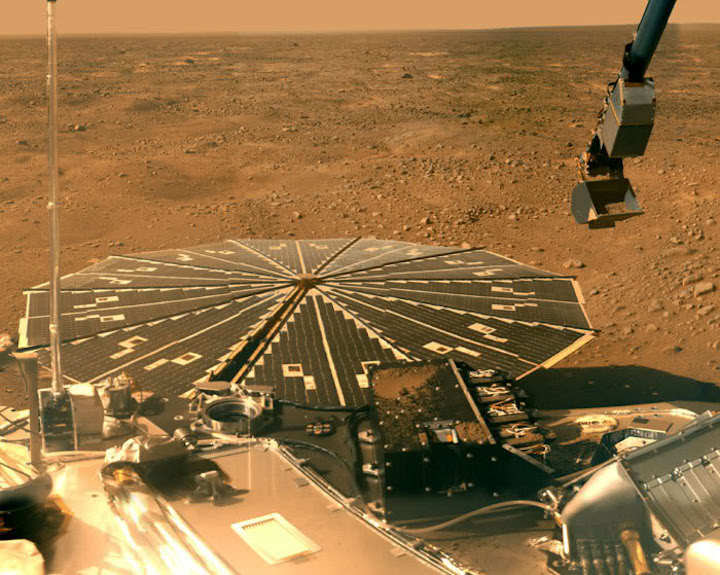
Nine years after Mars Polar Lander’s demise, the Phoenix spacecraft alighted close to the Martian arctic circle lander near Martian arctic circle. Photo Credit: JPL/ University of Arizona
The process of determining what had happened rested in the hands of a special review board, which presented its findings in March 2000. It found that—given a total absence of telemetry data from Mars Polar Lander and no response from the spacecraft to any of the attempted recovery actions—the most likely conclusion was a premature shutdown of the main engine, “resulting from a vulnerability of the software to transient signals”. In all probability, the spacecraft incorrectly identified vibrations from the landing-leg deployment as touchdown on the surface and, correspondingly, its software shut down the descent engine at an altitude of perhaps 130 feet (40 meters). Other possibilities included an unsurvivable landing site, loss of control or failure of the backshell, parachute or heat shield, with poor funding and management also cited.
Nine years later, NASA’s Phoenix lander picked up the baton where its ill-fated predecessor left off and began humanity’s detailed exploration of the Red Planet at high latitudes. Yet the loss of Mars Polar Lander added to a popular conception that the “gremlins” of Mars were somehow conspiring against our efforts to uncover its secrets. More importantly, the failure of this important science mission—as it approached its long-awaited target—underlines a haunting reality that, for all its inherent reward, space exploration remains profoundly fraught with risk.
Quelle: AS
